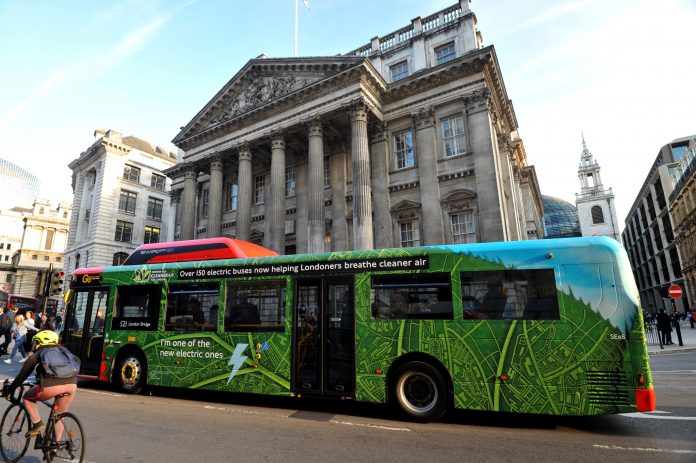Amy Adams, VP Fuel Cell & Hydrogen Technologies at Cummins, discusses how we can build momentum for cleaner transport to make way for more resilient, healthier, and more sustainable cities
Going into 2020, many in the transportation industry were excited about the prospects for the year ahead. Following a year in which mass global climate protests were met by ambitious policymaking – such as the UK’s plan to end the sale of new petrol and diesel cars by 2032 – as well as a further uptick in electric passenger vehicle sales, and a serious focus on exploring fuel cell and hydrogen technologies in the commercial space, this promised to be a time of significant, positive change and progress.
Of course, the year so far has instead been dominated by something that none of us could have foreseen. It has been inspiring to see how, around the world, everyone from governments to companies to individuals have put in hard, collaborative work to minimise the impact of COVID-19 and get us through this situation as safely and quickly as possible.
While health is still, as it should be, the primary focus of our international response to the pandemic, there is also hopeful and inspiring work being done to carry those unprecedented levels of global collaboration forward into the future, and to ensure that we don’t just recover, but improve. The recent Statement of Principles from the C40 group of mayors, for instance, demonstrates a clear appetite for making our cities more resilient, healthier, and more sustainable than ever.
Even before actions like that come into effect, there were small signs of hope in the current situation which show that things can change. As well as widely-reported improvements to air quality in urban areas, recent months have seen a global emissions reduction of around 17%. Knowing that we cannot sustain this with the economic slowdown, it’s also encouraging that leading economies like Germany see investment in electric vehicles and hydrogen technologies as a logical part of economic recovery, not a barrier to it. There is, in short, real appetite from both policymakers and citizens to make a collective difference.
Nonetheless, there is much work to be done in order to turn these intentions into tangible, cohesive action. When it comes to the power and transport aspect of this puzzle, I believe that we need a much more holistic picture of clean mobility if we are to capitalise on the potential of current developments in technology and social action. Too often, the story of transport decarbonisation is framed around the promotion of electric cars for personal use. This is, of course, important: 55% of the UK’s transport emissions originate from passenger cars. But there is a huge opportunity for 35% which comes from buses, vans and HGVs.
Commercial fleet vehicles
Commercial fleets need to be a bigger part of the narrative around sustainable transport. Not only do they represent a significant portion of global emissions, but their transition to cleaner alternatives could be managed much more cohesively and rapidly. With the right technology and the right policy environment, a company’s decision to purchase battery-electric (BEV) or fuel cell electric (FCEV) vehicles going forward could reduce the emissions of potentially thousands of vehicles. Compare that to the consumer space, which requires a slow process of persuasion for each potential buyer and where inherited ideas about different vehicle types might be more difficult to shift, and the opportunity is clear.
Increasingly, the technological maturity of BEVs is making them viable in many commercial vehicle applications, while FCEVs are arriving on the market which can meet power density needs that battery-based vehicles cannot. Hand in hand with this technological aspect is the reduction in cost we have seen in recent years, such that businesses can find comparable return-on-investment between ICE and non-ICE vehicles as scale is achieved. This progress is evidenced by news such as the further testing and roll-out of hydrogen-powered trains on non-electrified lines.
Besides technology and economics, the right regulatory framework and infrastructure development can increase adoption. Fleet vehicles are long term capital investments for businesses, who need to be sure that adopting vehicles today will still be a good investment in the future. Clear communication and roadmaps from policymakers about the decarbonisation of commercial vehicles would help to assure industry that the political will to back their commitments is there.
EV charging infrastructure
The adoption of battery and hydrogen-powered vehicles is also reliant on the availability of adequate infrastructure. While there has in the UK been a significant amount of funding going into EV charging infrastructure, for example, this has again been focused primarily on the consumer market. The dynamics of charging or refuelling vehicles in a commercial context are often complex – and require attention to things like grid capacity, local electricity infrastructure, safety regulations and sustainable supply. Solving these in a commercial context will bring significant network effects to the wider picture of adoption, including consumers.
These four factors for effective adoption – technology, economics, regulation, and infrastructure – are as true now as they were when 2020 began. The context they are operating in, however, has changed. New behaviour shifts are occurring, particularly in terms of reduced public transport usage and increased last-mile delivery activity, which will require careful consideration. This evolving, varied set of behaviours will only increase the need for multiple, complementary technologies that help us solve the clean transport puzzle. Building on the will to change and collaborate, these four factors must continue to guide us – and together, help accelerate our journey towards a sustainable future for transport.











